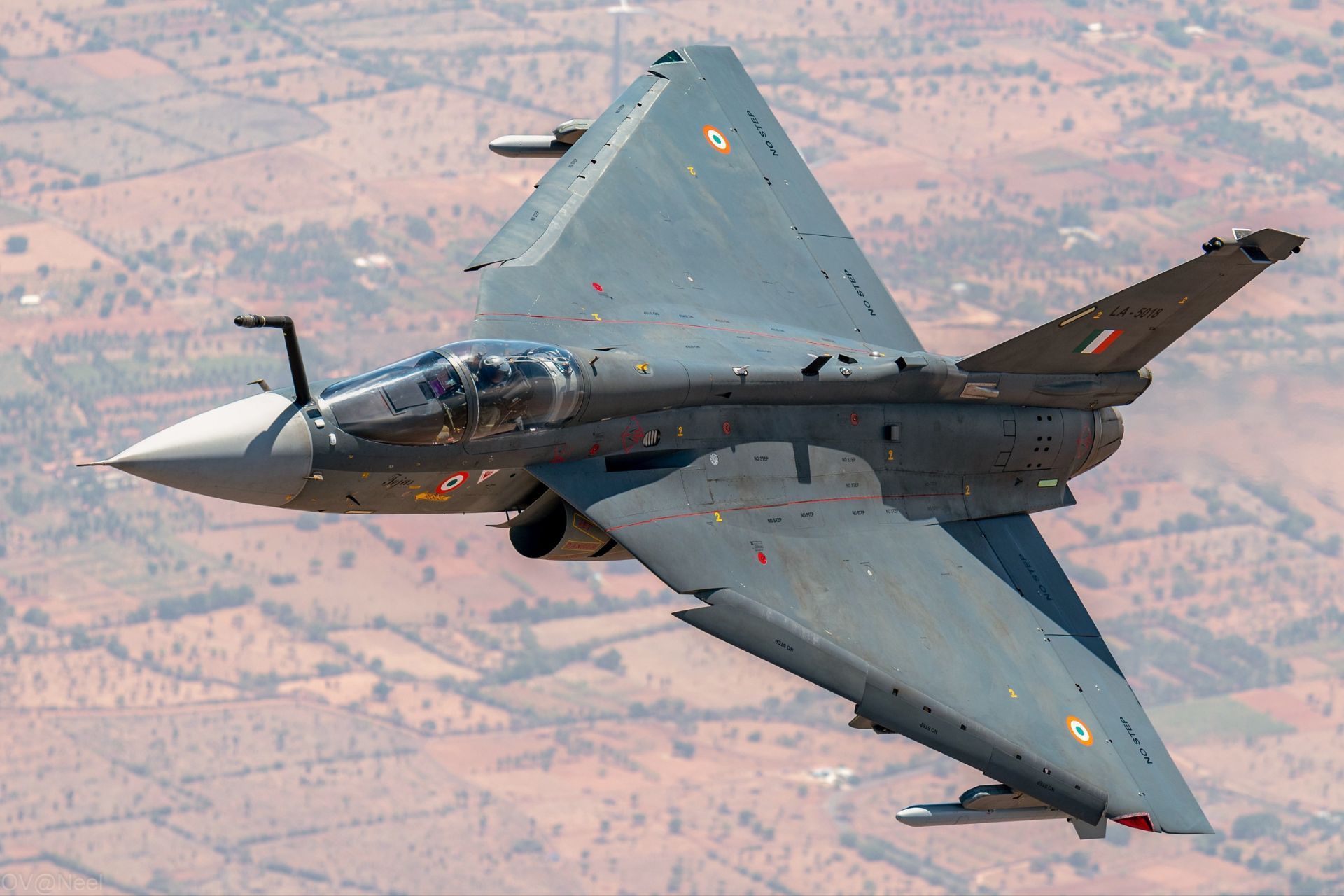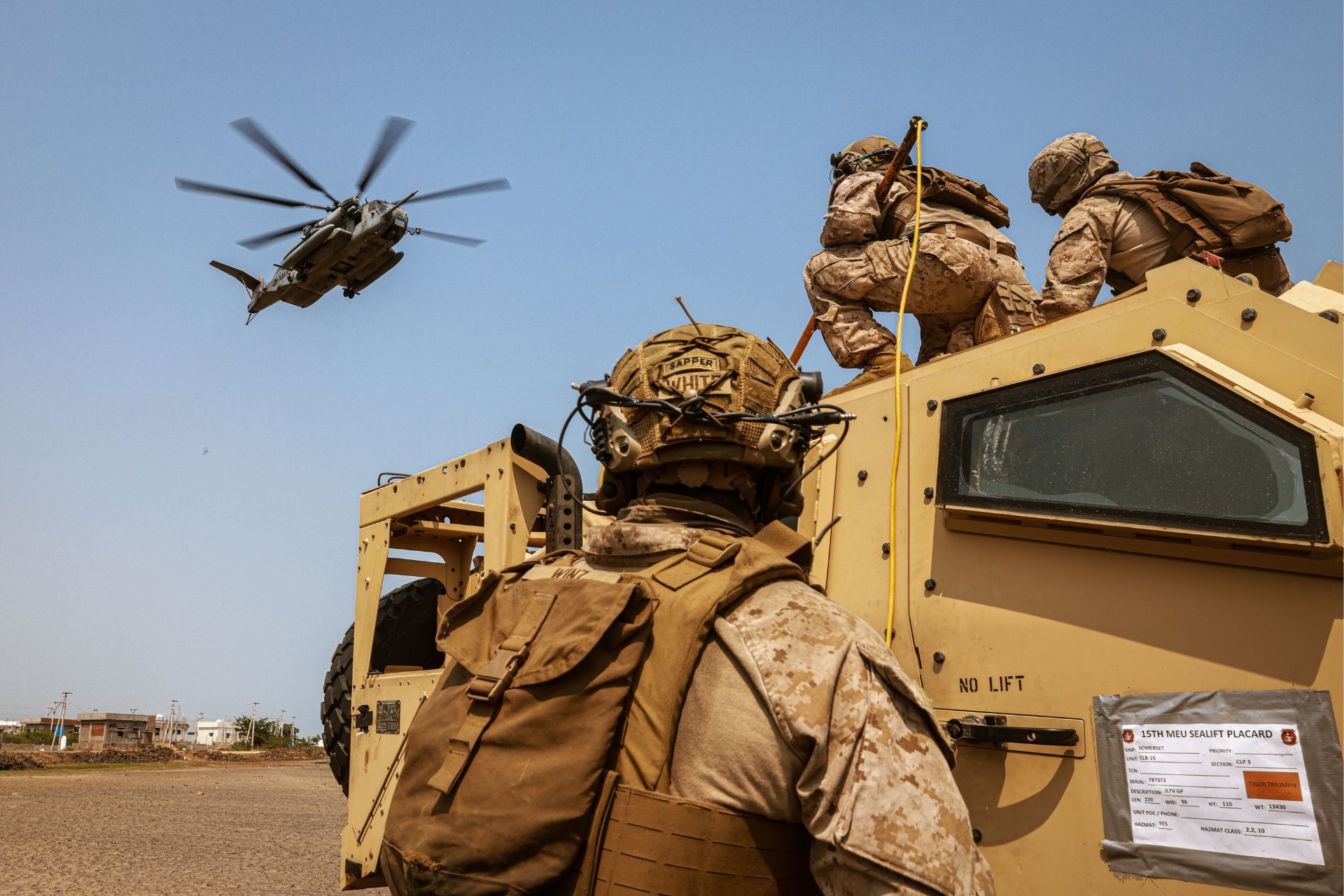Breaking News
Analysis: With SOSA India Strengthens Ties with US and Aims to Develop Its Defense Industry.
On August 22, 2024, India and the United States signed two important agreements aimed at enhancing defense cooperation between the two nations. The Security of Supplies Arrangement (SOSA) and a Memorandum of Understanding (MoU) on the assignment of liaison officers mark a new phase in their strategic partnership. These agreements were concluded during Indian Defense Minister Rajnath Singh's visit to the U.S., further solidifying defense ties between the two countries.
Follow Army Recognition on Google News at this link

The U.S. has collaborated with India to integrate advanced American systems into the Tejas light combat aircraft, thereby boosting India's autonomy in producing fighter jets. (Picture source: WikiMedia)
The SOSA agreement is a crucial step toward closer industrial collaboration, allowing both countries to request priority support for defense-related goods and services. This arrangement is designed to address potential supply chain disruptions, ensuring that India and the U.S. can maintain the necessary industrial resources to meet their national security needs. Although SOSA is not legally binding, it operates on the principle of mutual goodwill and strengthens the defense industrial bases of both nations. India becomes the 18th country to sign SOSA with the U.S., joining a group that includes close allies such as Australia, Japan, and the United Kingdom.
India and the U.S. have developed several joint defense projects as part of their growing strategic partnership. One notable example is the strategic partnership agreement for developing a high-power reactor for submarines, aimed at jointly advancing nuclear submarine technologies and enhancing India's maritime defense capabilities. Additionally, the U.S. has collaborated with India to integrate advanced American systems into the Tejas light combat aircraft, thereby boosting India's autonomy in producing fighter jets.
In the field of drones and unmanned aerial vehicles (UAVs), both countries are working together to develop and co-produce surveillance and attack drones, leveraging cutting-edge American technology. In July 2024, India and the U.S. signed a $3.1 billion contract for 31 MQ-9B Predator drones, with the U.S. also offering consultancy to help Indian entities develop their own UAVs. Another key project involves the co-development of advanced jet engines for future Indian fighter jets, discussed as part of the strategic dialogue between the two nations. The Defense Technology and Trade Initiative (DTTI) encompasses several projects, including advanced protection systems for Indian tanks, co-production of artillery systems, and the development of smart munitions.

U.S. Marines conducted a helicopter support team lift operation by attaching a Joint Light Tactical Vehicle to a CH-53E Super Stallion during Exercise Tiger TRIUMPH at Kakinada Beach, India, on March 29, 2024 (Picture source: US DoD)
The COMCASA and BECA agreements, though not tied to specific projects, enhance interoperability and technological cooperation, allowing India access to sensitive U.S. technologies and facilitating the sharing of strategic information. Moreover, India and the U.S. have collaborated on military transport aircraft programs, including the C-17 Globemaster III and C-130J Super Hercules, which are crucial for the strategic mobility of the Indian military. These projects demonstrate the breadth of cooperation between India and the U.S. in the defense sector, marking a new era in bilateral relations between the two nations.
The next crucial step in this defense partnership is the signing of the Reciprocal Defense Procurement (RDP) Agreement. Unlike SOSA, RDP will be legally binding, requiring both nations to prioritize defense orders from each other's companies. This agreement is expected to open up more opportunities for large-scale joint production and procurement, further boosting bilateral defense trade. The U.S. has already signed RDP agreements with 28 other countries, facilitating greater interoperability and collaboration in defense procurement.
The U.S. has a major strategic interest in supporting India due to its key geographic position in the Indo-Pacific region. India, as an emerging regional power, plays a crucial role in the U.S. strategy to counter China's growing influence in this strategically important area. By strengthening ties with India, particularly through defense and security agreements, the U.S. aims to build a partnership capable of promoting maritime security, freedom of navigation, and countering China's ambitions in the Indo-Pacific. Additionally, India's growing economic importance and vast market make it an essential ally for the U.S., not only for security reasons but also for economic and technological cooperation in this geopolitically crucial region.

India and the U.S. have collaborated on military transport aircraft programs, including the C-17 Globemaster III and C-130J Super Hercules. (Picture source: US DoD)
At the same time, India adopts a multipolar approach in its international relations, seeking to balance its ties with various global powers, including the U.S. and Russia. Despite strengthening its ties with Washington, particularly in defense and technology, India also maintains close relations with Russia, a long-standing strategic partner, especially in the military and energy sectors.
Through agreements like SOSA, India seeks to develop its defense industry further. The growth of India's defense industry has been notable in recent years, supported by government initiatives such as "Make in India" and "Atmanirbhar Bharat" (self-reliance). Among the strengths of this industry are its ability to produce a wide range of military equipment, from missiles to fighter jets, as well as establishing international partnerships with countries like Russia, France, and the U.S. to co-develop advanced technologies.
However, the Indian defense industry still faces several challenges. These include a persistent reliance on imports of critical components, frequent delays in project production and delivery, and a cumbersome bureaucracy that can hinder process efficiency. Despite these obstacles, India continues to strengthen its defense sector, aiming to reduce its dependence on imports and become a major player on the international arms production stage.


























